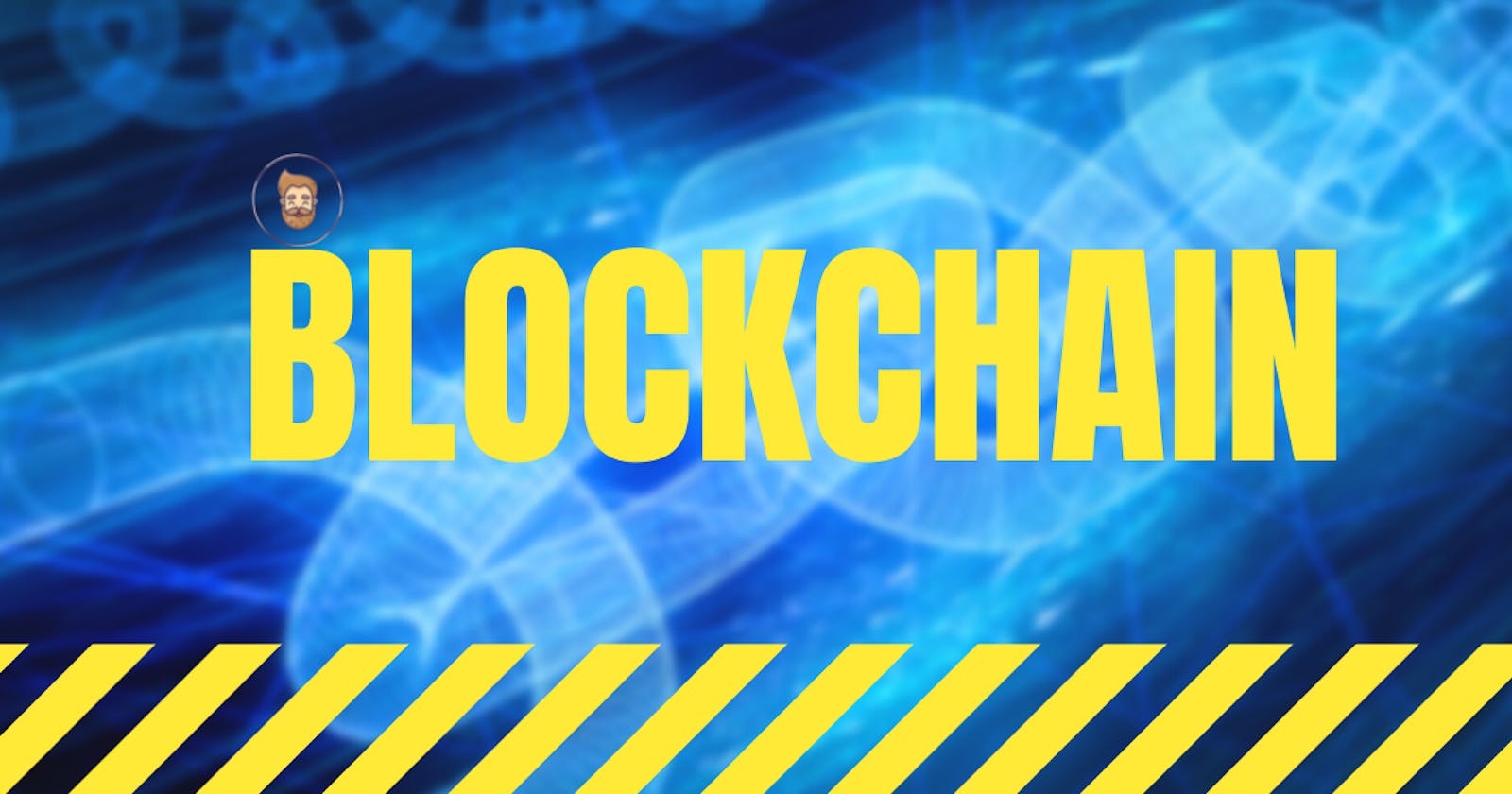What is a Blockchain Technology? A Simple Explanation
Blockchain Technology: One of the biggest innovations of the 21st Century.
Blockchain has the potential to grow to be a bedrock of worldwide record-keeping systems.
Some people believe that Bitcoin magically appeared back in 2009. But this is not the case. So to understand it clearly we have to know about the History of Blockchain, Then we'll start understanding it.
A brief History of Blockchain
1991 - Invented

Blockchain technology was first described in 1991 by the research scientist Stuart Haber and W. Scott Stornetta. They wanted to develop a digital solution for time-stamping digital documents so that the documents could not be tempered.
1992 - Merkle Trees
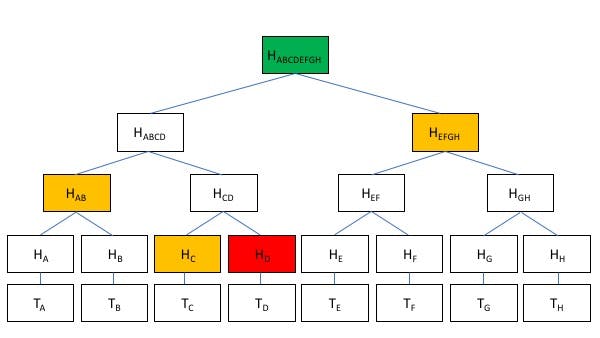 Merkle Trees were used in the design, which makes blockchain more efficient by allowing several documents to be collected into one block.
Merkle Trees were used in the design, which makes blockchain more efficient by allowing several documents to be collected into one block.
1998 - BitGold
 Nick Szabo a computer scientist, legal scholar, and cryptographer works on bit gold. He designed a mechanism for a decentralized digital currency. Bit Gold was never implemented, but has been called direct precursor to the Bitcoin architecture. He also developed the concept of smart contracts.
Nick Szabo a computer scientist, legal scholar, and cryptographer works on bit gold. He designed a mechanism for a decentralized digital currency. Bit Gold was never implemented, but has been called direct precursor to the Bitcoin architecture. He also developed the concept of smart contracts.
2000 - Stefan Konst
 Stefan Konst publishes his theory of cryptographically secured chains, plus ideas for implementation.
Stefan Konst publishes his theory of cryptographically secured chains, plus ideas for implementation.
2004 - RPoW
 Hal Finney introduced a system called Reusable Proof Of Work(RPoW) as a prototype for digital cash. The RPoW system worked by receiving a non-exchangeable or a non-fungible Hashcash based proof of work token in return, creating an RSA-signed token that further could be transferred from person to person.
Hal Finney introduced a system called Reusable Proof Of Work(RPoW) as a prototype for digital cash. The RPoW system worked by receiving a non-exchangeable or a non-fungible Hashcash based proof of work token in return, creating an RSA-signed token that further could be transferred from person to person.
2008 - Satoshi Nakamoto
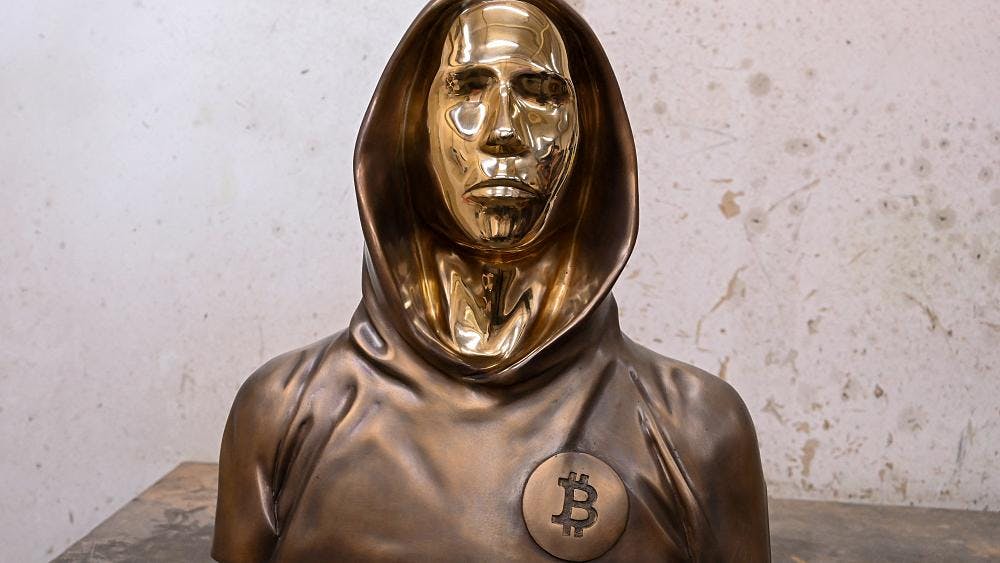 Developer(s) working under the pseudonym Satoshi Nakamoto released a white paper establishing the model for a blockchain. He improves the design in a unique way to add bocks to the initial chain without requiring them to be signed by trusted parties. It utilizes a peer-to-peer network for timestamping and verifying each exchange. It could be managed autonomously without requiring a central authority. Today, the design serves as the public ledger for all transactions in the cryptocurrency space.
Developer(s) working under the pseudonym Satoshi Nakamoto released a white paper establishing the model for a blockchain. He improves the design in a unique way to add bocks to the initial chain without requiring them to be signed by trusted parties. It utilizes a peer-to-peer network for timestamping and verifying each exchange. It could be managed autonomously without requiring a central authority. Today, the design serves as the public ledger for all transactions in the cryptocurrency space.
White Paper Published by Satoshi Nakamoto
2009 - Bitcoin
 Nakamoto implements the first blockchain as the public ledger for transactions made using bitcoin.
Nakamoto implements the first blockchain as the public ledger for transactions made using bitcoin.
2014 - Ethereum
 Blockchain technology is separated from the currency and its potential for other financial, inter-organizational transactions are explored.
Blockchain technology is separated from the currency and its potential for other financial, inter-organizational transactions are explored.
Blockchain 2.0 is born, referring to applications beyond currency. The Ethereum blockchain system introduces computer programs into the blocks, representing financial instruments such as bonds. These become known as smart contracts.
Present
 Blockchain applications go far beyond cryptocurrency and bitcoin. With its ability to create more transparency and fairness while also saving businesses time and money, the technology is impacting a variety of sectors in ways that range from how contracts are enforced to making government work more efficiently.
Blockchain applications go far beyond cryptocurrency and bitcoin. With its ability to create more transparency and fairness while also saving businesses time and money, the technology is impacting a variety of sectors in ways that range from how contracts are enforced to making government work more efficiently.
Now, we know about the history of Blockchain. we can say that it is not a very new technology, Its base was established in 1991 and we are still working on it to solve our existing problems which can't be solved by existing technology.
Let's move to the technical part of the article, here we'll actually know What is Blockchain ? and How does it work?.
What is blockchain?
Blockchain is an immutable, distributed, decentralized, peer-to-peer ledger replicated across multiple nodes connected in a network, making it possible to record data about any event or transaction as it happens. It consists of blocks in a chain used to record as digital assets using a secure algorithm.
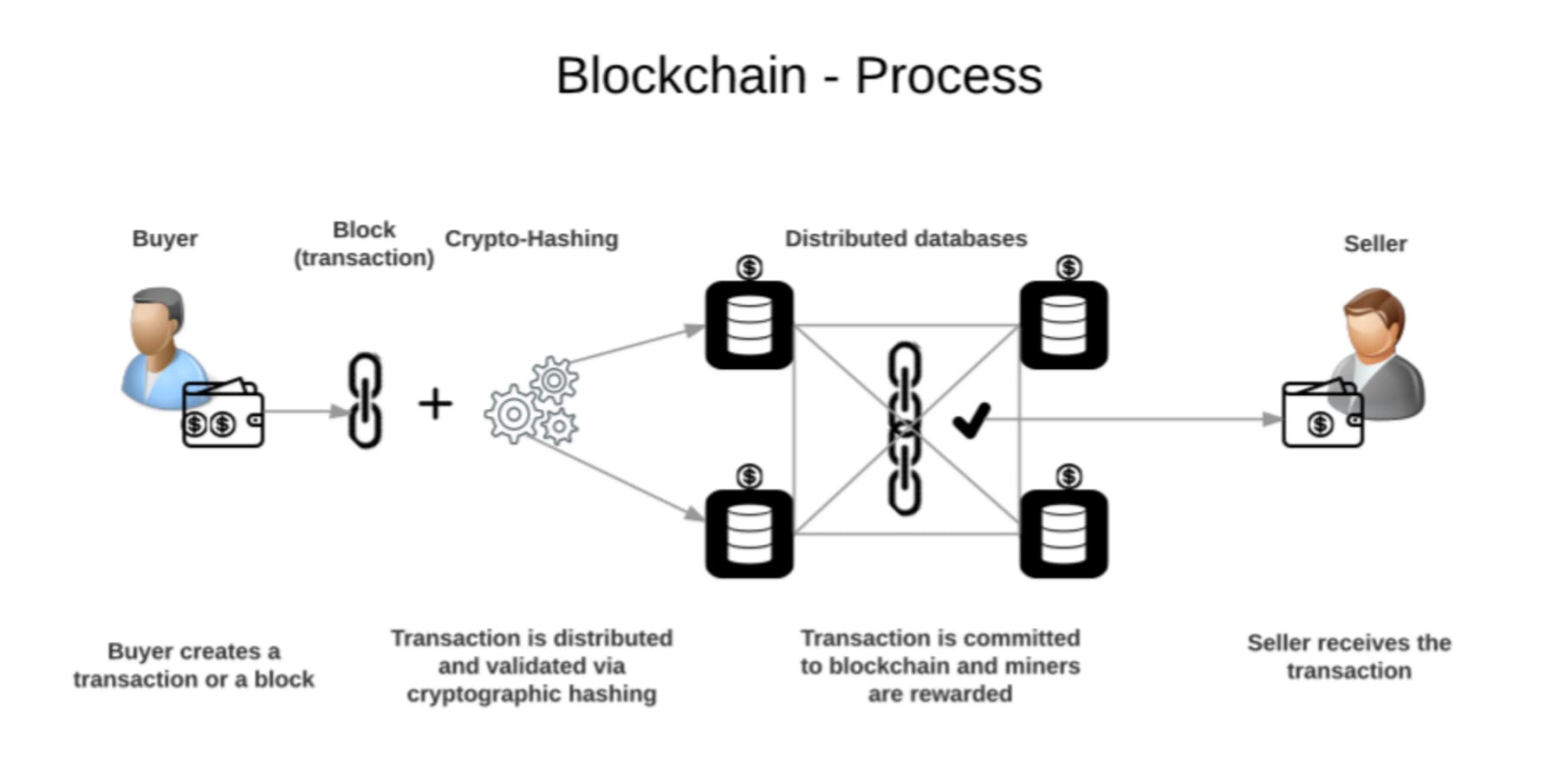
In a simple term, we can say that Blockchain is a method of storing data. Data is stored in blocks that are linked to the previous block.
The key difference between the Database that we are using now and Blockchain is that both record transactions, but the database is centralized and has a single point of failure. In contrast, the Blockchain is decentralized and distributed on multiple nodes across the network.
Before getting deep into the blockchain, let us familiarize ourselves with key terminologies.
Ledger
A ledger records transactions such as recording payments, supply chain details, medical records, real-estate contracts, etc.
Data
Data in the block usually consists of transactions. A block can contain thousands of transactions.
Hash
A hash is a unique combination of letters and numbers. It is like a fingerprint for the data in a block and it is always unique to every block in the Blockchain. When the data in a block changes, the hash will also change.
For example,
Enter some text inside the input box, and then press calculate you will get a 64-digit alphanumeric number called Hash. It is unique, if you change a single bit of data then the Hash will be completely changed, and this process is irreversible.
We have several different Hashing algorithms, But SHA-256 is a little bit popular because it is being used in Bitcoin Blockchain.
Mining
It is the process of validating and recording new transactions on a blockchain performed by Miners(People who run mining software on their computer) for which they have a special mining software.
Node
A Node(Computers) in a blockchain can be any electronic device that is part of a peer-to-peer network and maintain its own copy of the blockchain
Now we are aware of some terminologies of Blockchain. Now we can deep dive into it and learn How Blockchain works?
How Blockchain Works?
Let's understand it by an example.
Let's assume I gave you 1 Bitcoin, In Blockchain terms, it is considered as a transaction. Every time a new transaction occurs, a record of that transaction is added as a new block to the chain. A block in the chain is immutable. It can never be updated and only be appended to the chain.
The first block in any Blockchain is known as Genesis Block
Information stored in a Block
Version number to track the software or protocol that will allow other computers to read the block correctly.
Timestamp: When the transaction was recorded, or the block was created and is expressed as seconds since 1970–01–01T00:00 UTC.
Hash of Prev Block: This is the same Hash that we have already talked about. This ensures the integrity of the previous block all the way back to the first block referred to as a Genesis block.
Nonce stands for number only used once. The nonce is a randomly generated number that miners generated to solve a complex mathematical problem to create a block.
There is a lot more complex data is associated with a Block, we are not going to talk about that much. Because I want to make it simpler.
Take a look at the Data stored inside a Block of a Bitcoin Blockchain. To explore it more you can refer to this LInk
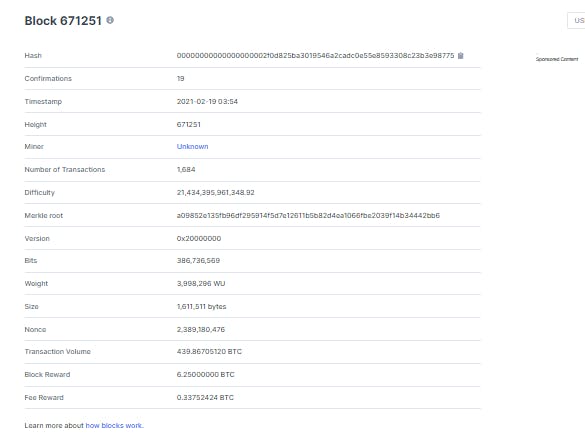
Benefits of blockchain
The primary benefit of blockchain is as a database for recording transactions, but its benefits extend far beyond those of a traditional database. Most notably, it removes the possibility of tampering by a malicious actor, as well as provides these business benefits:
Time savings: Blockchain slashes transaction times from days to minutes. Transaction settlement is faster because it doesn't require verification by a central authority.
Cost saving: Transactions need less oversight. Participants can exchange items of value directly Blockchain eliminates duplication of effort because participants have access to a shared ledger.
Tighter Security: Blockchain's security features protect against tampering, fraud, and cybercrime.
Weakness of Blockchain
High Energy consumption: to solve the cryptographic challenge in order to add a block to the blockchain.
51% attack: is an attack on the blockchain orchestrated when a group of miners on the blockchain network control more than 50% of the network's hash rate or computing power to prevent new transactions from gaining confirmations, or ability to invalidate transactions that introduce double spend.
Types of Blockchain
Public Blockchain: It is not-restrictive, transparent, permissionless, fully distributed ledgers. Anyone can view the transactions on it. The most important feature of this blockchain is no one individual or entity controls the blockchain and transactions that are recorded in the blockchain.
Ex: Bitcoin, Ethereum, Litecoin, etc.
Private Blockchain: It is centralized, restrictive, and users require permission to join. Mainly It is being controlled by Enterprises for recording their sensitive business data not to be visible outside the organization.
Ex: Hyper ledger
Hybrid Blockchain: It is a combination of the private and public blockchain. Combines the permissioned feature of the private blockchain with the security and transparency feature of a public blockchain. Hybrid Blockchain is best suited for businesses providing them with the required flexibility to operate securely and transparently
Ex: IBM food trust, XDC
Conclusion
By 2030, Blockchain could be used as a foundational technology for 30% of the global customer base. By 2025, blockchain would add a business value that will grow to over $176 Billion. This would increase further to $3.1 Trillion by 2030.
From the above data, you can guess the potential of Blockchain. Hope you learned something new. If you really do, kindly Like and Share this one on your social media.

